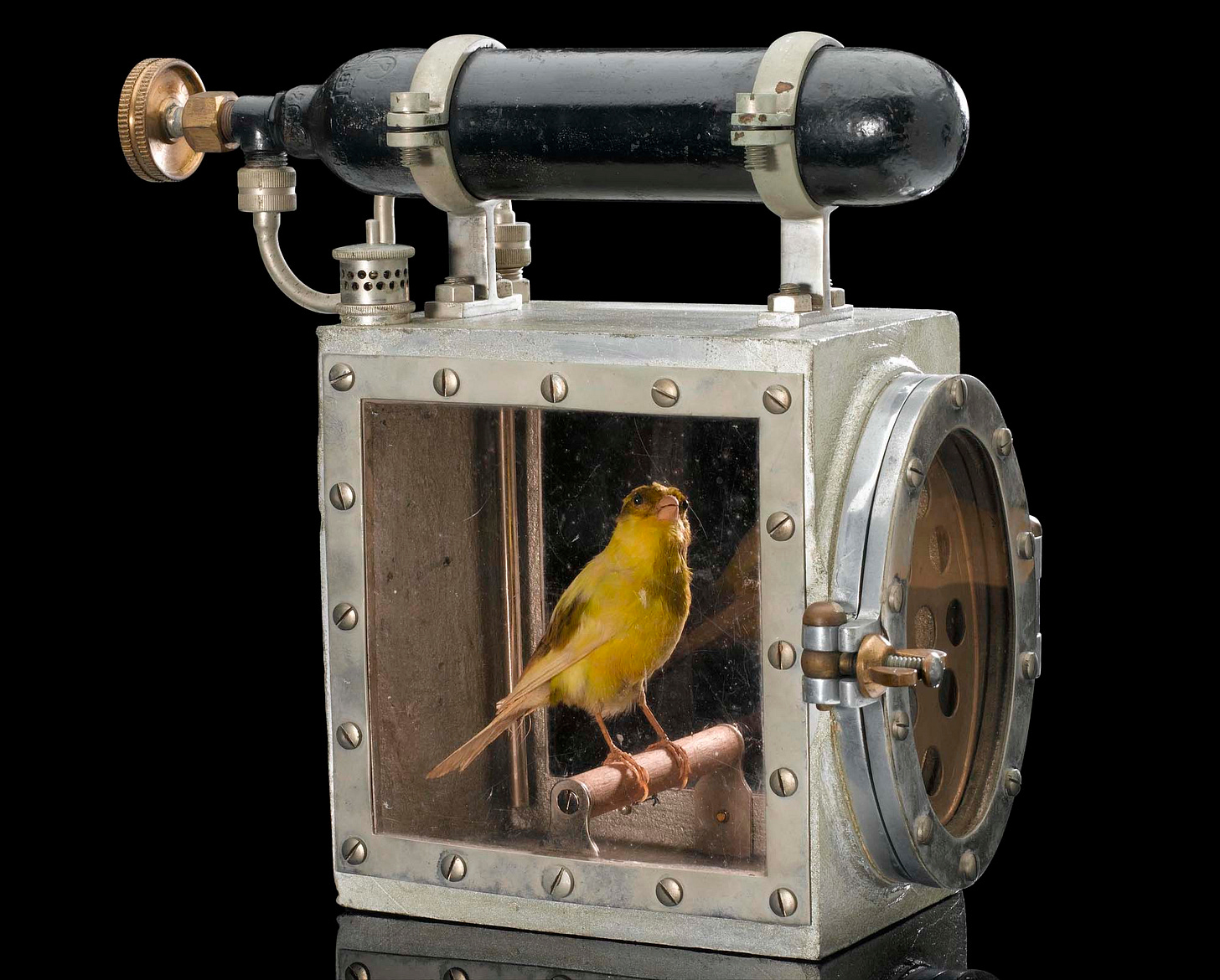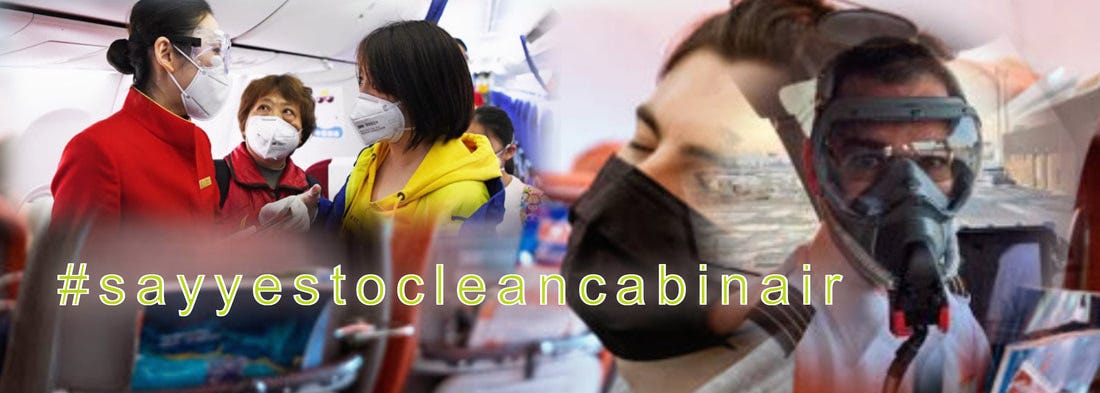The beautiful yellow birds, Canaries, were used in mines in the late 1800s to detect gaseous fumes, such as carbon monoxide. Gas is deadly to humans, especially in large quantities. Canaries are much more sensitive to even small amounts of gas and will therefore react more quickly than humans.

John Scott Haldane, a British physiologist and philosopher chiefly noted for his work on the physiology of respiration was called in to investigate the cause of an explosion in a mine at Tylorstown Colliery in 1896. He concluded that a carbon monoxide buildup was the cause of the explosion. He started working on developing a method for identifying the colorless gas before it could endanger humans. Among his most widely used devices was the hemoglobinometer, an apparatus for the analysis of blood gas, and an apparatus for the analysis of mixtures of gases. In a paper he sent to the British Home Secretary, Haldane recommended that miners take a small animal, a mouse, for example, with them into the mines since they have a higher relative metabolism than humans and would show signs of toxic fumes and subsequent poisoning sooner. Canaries were soon being regularly brought into mines by UK miners as a safety measure.
Haldane invented the cage shown above in the picture, also to protect the little sentinels. The round entrance was kept open and had a grate to prevent the canary from escaping. If the canary showed signs of toxic fumes poisoning, a valve would be opened and the door closed. By doing that, the oxygen in the tank above was released, helping to revive the canary by breathing fresh air. The miners had to evacuate the hazardous area immediately.
Many miners cared deeply for their canary companions, and some didn't like the advent of electronic sensors when British legislation officially ordered them to replace canaries on December 30, 1986, because it meant losing that companionship. I though, am relieved that it ended since I feel so bad for the small birds because I know firsthand how sick poisonous fumes can make people.
Aviation’s Canaries
From the depths of the dark coal mines to high up in the air: toxic fumes in aircraft. My question remains, and my readers who have been following my articles know why I ask: Why is there still no (British or other countries) legislation ordering devices onboard aircraft that quickly and efficiently detect toxic engine oil and exhaust fumes that can enter the passenger cabin via the engine bleed air?
These fumes contain a multitude of toxic substances, that are even more dangerous than the fairly low levels of carbon monoxide that can also be present. Certain chemicals in the toxic soup have been determined to be endocrine and fertility-damaging, carcinogenic, and can cause immediate nervous system reactions such as dizziness, tunnel and other vision problems, headache, tremors, loss of concentration, and confusion.
Needless to say how dangerous to the health and safety of everybody on board this can be, especially when one or worse both pilots should suffer from mentioned effects. If they are confused and don’t react quickly enough and don’t put on their oxygen masks immediately - well, I don’t even want to think about it!
If you follow this link you can read several flight reports submitted by pilots following their horrifying experiences and health issues after inhaling fumes in the cockpit.
I can assure you that pilots and cabin crew, particularly those who have endured the harrowing experience of acute toxic fumes poisonings while in flight and subsequent chronic ill health, loss of medical license, loss of lively hood, and their dream, would have been extremely grateful to have had toxic fumes warning devices installed in their aircraft so they wouldn't have had to be, in the end "the wounded canary”.
An “electronic nose”, a device that makes everybody quickly aware that there is an air contamination problem that needs to be dealt with - before pilots, cabin crew, and passengers suffer symptoms of poisoning, does not cost the world, but could be bad for reputation: it would be going off “all the time”.
On top of there not being an electronic measuring device on board, and of course no way to evacuate immediately, there also isn't any medical oxygen on every aircraft (Note: to release the overhead masks would be of no help since they supply a mix of oxygen and cabin air). Not every airline supplies emergency medical kits that include O2 for a “quick fix” to use in the way John Haldane created one for the canaries - (only the pilots have oxygen masks). It’s the human nose that acts as a “device” and then not everybody recognizes a “smell” as one that shouldn’t be there. Another problem is that the human nose, respectively the olfactory nerves can get used to even an unpleasant smell within minutes, even seconds, and the person thinks it is gone when it is not. And then, just like the previously unprotected bird that stopped singing and fainted from the lack of oxygen and intake of poisonous gasses, human beings, mostly crew members become “the canaries” and suffer the consequences.
And that is the reason why I named my blog (and my second book’s subtitle): Aviation’s Wounded Canaries.
For more in-depth information about the reasons, the way over 300 chemicals found in the aircraft interior, the science, the health consequences, countless testimonies, evidence, documentaries/films, and interviews, as well as current and past court cases and flight reports by aircrew go to UNFILTERED
Please also support our PETITION, thank you.
Note: The information about the canary in the coal mines can be found i.e. at MSIM or Smithsonian Magazine and others.






Thank you and God bless you for leading this campaign of exposing the deadly environment in aviation . I too believe I was brain damaged from toxic fumes over time on the Airbus. After brain surgery to stop a bleeding blood vessel my career was over. I wouldn’t go back even if I was totally recovered. I want to pursue this legally now . Do you know of law firms that are taking this on ? If so, please share their contact information . My doctors at a prestigious clinic and hospital never heard of aerotoxic syndrome but could not find any answers as to why this happened. This was in 2014 and still even today all my health tests come out great .